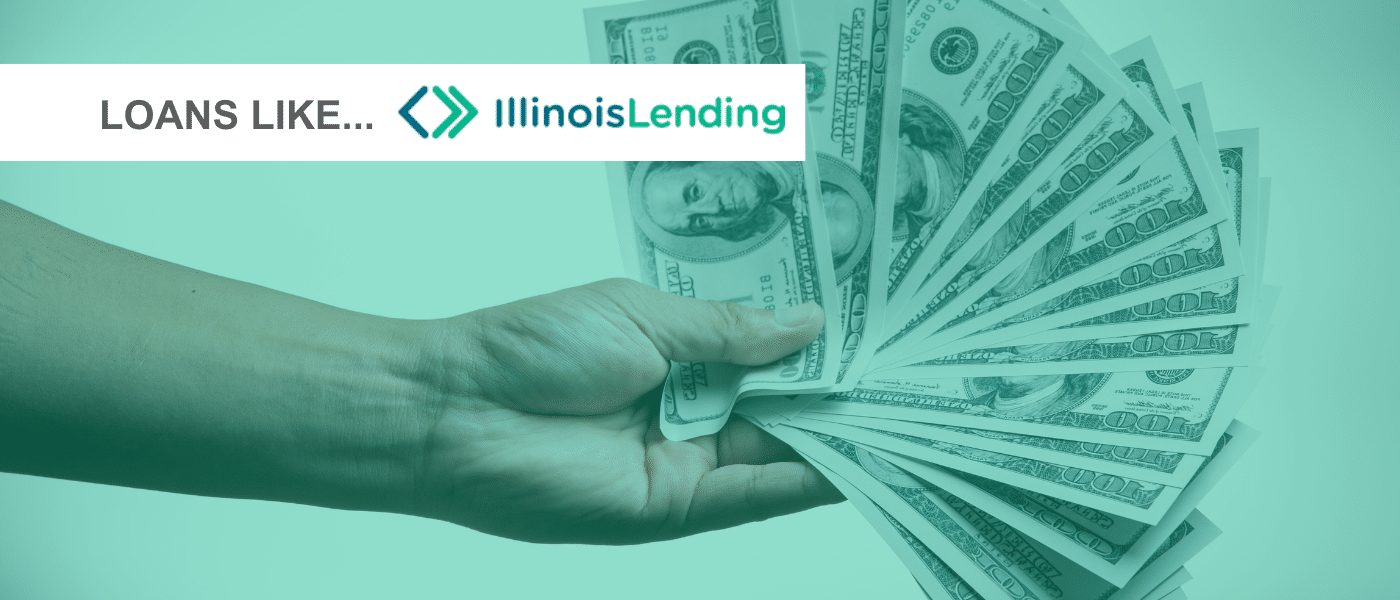In the words of President Joe Biden, “Dedicated public servants are the lifeblood of democracy. They do the hard work that is essential to our country’s success– protecting us, teaching our children, keeping our streets clean and our lights on, and so much more.” Unfortunately, public servant workers, like many other Americans, often struggle with student loan debt, which may cause them to turn to subpar funding options like payday loans or a predatory No Credit Check Loan.
Thankfully, the Public Service Loan Forgiveness Program seeks to rectify this problem. Under this program, qualifying borrowers may receive debt forgiveness for their federal loans used for college or university. Here, you will learn how this public loan forgiveness program works, how you may qualify, and what your other options are when it comes to debt relief for federal student loans.
What Is Public Service Loan Forgiveness (PSLF)?
The Public Service Loan Forgiveness (PSLF) program is a repayment plan that forgives the remaining amount of a borrower’s federal student loans after they make 120 payments while working full-time for a qualifying not-for-profit organization. This income can come from the federal, state, Tribal, or local government or the military in addition to other qualifying not-for-profit organizations. Qualifying employment under the PSLF program would not include for-profit institutions, labor unions, or partisan political organizations.
With income-driven repayment plans, the amount of money borrowers are expected to contribute will depend on how much money they bring in regularly from their employment or from assets. Only qualifying payments count towards the 120 payments borrowers must make in order to be eligible for PSLF program benefits. Qualifying monthly payments for the PSLF program must meet the following conditions:
- Payments must have been submitted after October 1, 2007.
- Payments must have been part of a qualifying repayment plan.
- Payments must have been for the full amount that was indicated in the current loan agreement.
- Payment must have been made no later than 15 days after the designated due date.
- All payments must have been made while the borrower was a full-time employee of a qualifying employer.
How Much Can Be Forgiven With Public Service Loan Forgiveness
The total amount of all qualifying federal student loans will be forgiven once the conditions of the PSLF program are met. This includes making 120 qualifying payments while working for a qualifying employer.
How Do I Know if I Qualify for Student Loan Forgiveness?
Students under the following repayment plans, unfortunately, may not qualify for the PSLF program:
- Standard repayment plans for direct consolidation loans.
- Graduated repayment plans.
- Extended repayment plans.
- Alternative repayment plans.
Is Public Service Loan Forgiveness Still Available?
Borrowers who wanted to take advantage of temporary changes to the PSLF program were to submit a limited PSLF waiver by October 31, 2022. Borrowers who successfully completed this form should start to see changes implemented on July 1, 2023.
Types of Federal Student Loans and Financial Aid
Students may be eligible for the PSLF program after making qualifying payments on their student loans. Below is more information on the different types of loans available to students to help pay for their education.
Federal Direct Loans
Federal direct loans are the most common type of financial aid that may eventually become eligible for PSLF program benefits. To qualify for a loan based on financial need, students must first fill out the Free Application for Federal Student Aid, also called the FAFSA form.
Subsidized vs. Unsubsidized Direct Loans
Generally speaking, a direct subsidized loan is a type of federal student loan available to undergraduate students where borrowers are not responsible for making interest payments while in school and for a specified grace period after they graduate or are no longer in school.
An unsubsidized direct loan, on the other hand, is a loan for undergraduate, graduate, and professional students where the borrower is typically responsible for making interest payments from the start of the loan until it is paid off. Unlike other federal student loans, financial need is not required in order to qualify for an unsubsidized loan through the Direct Loan Program.
Financial Aid That May Not Qualify for the PSLF Program
Unfortunately, there are several types of student financial aid that probably won’t ever be eligible for PSLF. However, it may be possible for Federal Family Education Program loans and Perkins Loans to become eligible for PSLF if the borrower consolidates these loans under the Direct Loan Program.
Federal Family Education Loan (FFEL) Program
The FFEL program used to work with private lenders to provide student loans backed by the federal government. This program, unfortunately, ended in 2010.
Federal Perkins Loan
Perkins loans were a form of subsidized funding available to eligible students. Like the FFEL program, Perkins loans are no longer available.
Private Student Loans
Students may also access loans for school through private lenders. Private student loans are typically not based on financial need and operate much like other personal installment loans. Students may be able to get more convenient interest rates or higher loan amounts by including a co-signer on their private student loans.
Scholarships
Scholarships are a special type of financial aid that students can earn based on academic, athletic, or community service achievements. Unlike most student loans, scholarships are a financial award, meaning recipients are not responsible for paying back the funds they receive. Scholarships are often available directly through schools and universities as well as through third-party scholarship providers.
Direct Consolidation Loan
A direct consolidation loan is a special type of funding that allows borrowers to combine their eligible federal student loans into a single loan with one federal student loan servicer. To make the most of this debt consolidation offer, it’s best to wait to apply until after you have graduated or completed your schooling. If you do not qualify for the PSLF program, a new direct consolidation loan may be the next best option.
Other Student Loan Forgiveness, Cancellation, and Discharge Options
It’s important to understand the difference between loan forgiveness, cancellation, and discharge. Generally, loan forgiveness or cancellation refers to a situation where the borrower is no longer required to make payments on their loan. Loan discharge, however, usually refers to a situation where the borrower is no longer able to make payments on their loan due to extenuating circumstances. Some types of student loan forgiveness, cancellation, and discharge that students may be able to take advantage of are:
- Teacher Loan Forgiveness: Full-time teachers who have taught for five consecutive academic years in a low-income elementary school, secondary school, or educational service agency may be eligible for student loan forgiveness of up to $175,000. Loans that qualify for this type of forgiveness are Direct loans and loans under the FFEL program.
- Closed School Discharge: Students who have Direct Loans, FFEL program loans, or Perkins Loans and are enrolled in a school that is set to close may be able to have their loans discharged.
- Perkins Loan Cancellation and Discharge: Students who took out a Perkins Loan may be eligible to have all or a portion of their loan canceled if the student works for a qualifying employer or volunteer service. Or, under certain conditions, these Perkins Loan borrowers may be able to have their loan discharged.
- Total and Permanent Disability Discharge: Students who have become completely disabled may be able to have their Direct Loan, Perkins Loan, or FFEL Program loan discharged.
- Discharge Due to Death: Certain types of debts are forgiven at death, including some student loans. If a student passes away before paying off their student loan debt, they may qualify for student loan discharge due to death.
- Discharge in Bankruptcy (Only Available in Rare Cases): Sometimes, when borrowers declare bankruptcy, they will have their student loans discharged. However, this does not happen all the time and is only available to qualifying borrowers in very rare cases.
- Borrower Defense to Repayment: Circumstances regarding this type of loan discharge can vary greatly depending on the situation. But generally, students who received a loan for a school that either did something or failed to do something that was pivotal to their loan or the educational services their loan was meant to pay for, may be able to have that loan discharged.
- False Certification Discharge: Sometimes, schools will mistakenly certify students to receive a certain type of loan. If this happens and the student does not want their loan, they may be able to have it discharged.
- Unpaid Refund Discharge: Student loan borrowers who received a loan where their school did not make a required return of loan funds to the intended loan servicer may be able to have this particular loan discharged.
- Forgery Discharge: If a student loan was fraudulently taken out in your name, you may discharge the loan via this forgery discharge option.
- Loans for Parent Borrowers: Borrowers may be able to have their Parent PLUS loan discharged under the following circumstances:
- The student who was the recipient of the loan did not complete their education at a particular institution due to a closure.
- The loan was mistakenly certified.
- The loan was taken out in an act of forgery.
- The student who was the recipient of the loan withdrew from school, and their school failed to pay a refund of the loan that was required under applicable laws or regulations.
Public Service Loan Forgiveness vs. The Student Debt Relief Plan
While the PSLF program is an income-driven repayment plan that requires students to make payments before they can qualify for loan forgiveness, the Biden Administration’s Student Loan Debt Relief Plan involves automatic loan forgiveness of up to $10,000 for eligible Non-Pell Grant borrowers and $20,000 for eligible Pell Grant borrowers.
In March 2020, the U.S. government issued a student loan pause that spared thousands of students in debt from having to make payments on their federal student loans or pay federal income tax on them.
Unfortunately, private student loans were not included in this student loan pause. Then, in August of 2022, President Biden and the U.S. Department of Education shared plans for a student debt relief program. Under this student debt relief plan, qualified students could receive $10,000 to $20,000 worth of student loan forgiveness.
Tips on Getting Rid of Federal Student Loan Debt Faster
Federal student loan borrowers may also be able to save money and reduce their student loan debt faster with the following tips:
- Make Timely Monthly Payments – Making your monthly loan payments on time is essential to paying off your debt on time. Being on time with your loan payments will ensure you avoid additional charges like late fees, and it may also help you improve your credit score over time as well.
- Pay More Than Your Minimum Amount Due – If you can, try to pay more than your minimum amount due. Or, you can try to make multiple payments in a single month. Paying more or paying more often will not only reduce the amount of time it takes to pay off your loan, but you may save on interest rate charges also!
- Consolidate Debt – Rehabilitating, or consolidating, your debt can help you get a student loan interest deduction. Instead of making several lump sum payments on multiple loans, you can pay off debt by making one easy payment a month.
Be sure to check out the CreditNinja dojo for more information about debt relief, consolidation loans, and more!
References:
Public Service Loan Forgiveness (PSLF)
What is Public Service Loan Forgiveness? | Consumer Financial Protection Bureau
Student Loan Forgiveness | Federal Student Aid
The Biden-Harris Administration’s Student Debt Relief Plan Explained
Public Service Loan Forgiveness – The White House





